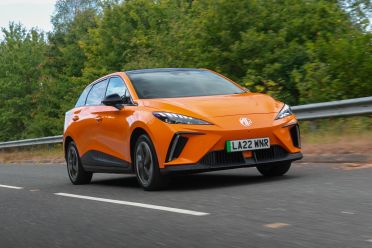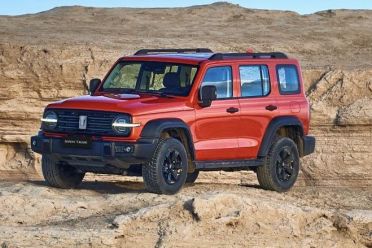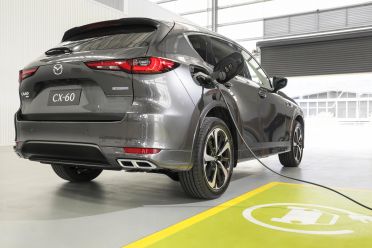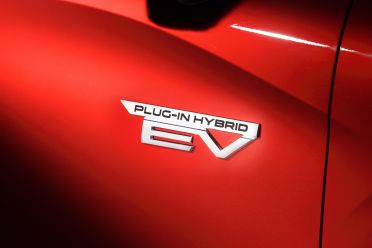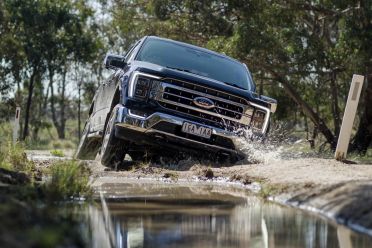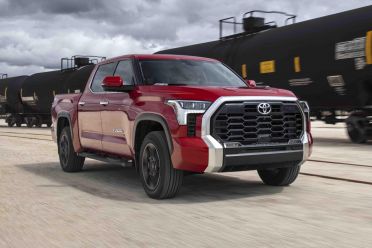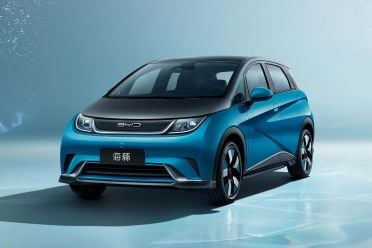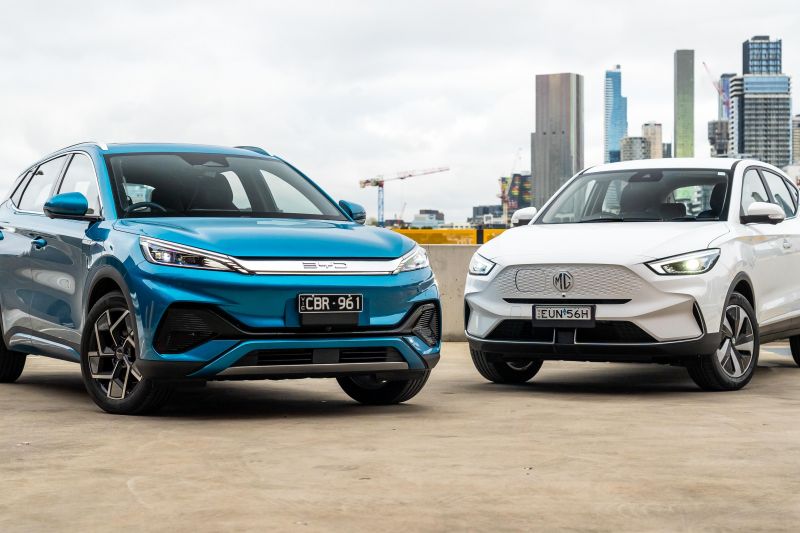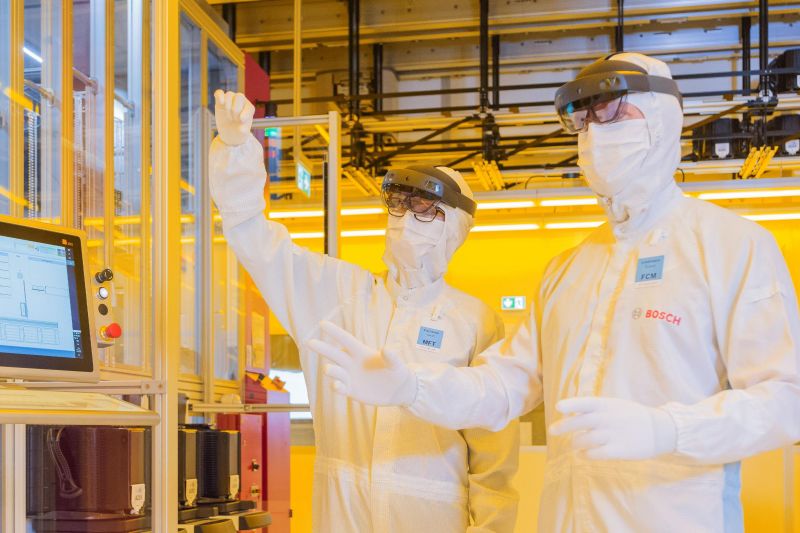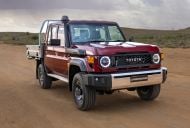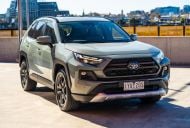Part of being a motoring writer is predicting trends, having a think about what paths the car market might take in the near-term.
Some trends such as electrification are as clear as day, while others are based on looser hypothesising.
Here we jot down one expectation for 2023 from various team members. Add your two cents in the comments!
Mike Costello
China will become Australia’s third-largest source of cars
Sales of cars made in China spiked 55 per cent to the end of November this year, making the country our fourth-biggest source of vehicles behind Japan, Thailand and Korea.
More than 10 per cent of new vehicles sold this year at the time of writing were made in China – either by rapidly growing Chinese brands MG, LDV, GWM, Haval and BYD, or brands that source cars from there such as Tesla, Volvo and Polestar.
All (or most) of those brands will keep growing at pace in 2023 with more models on the horizon, and be joined by other Chinese brands such as Chery, GWM Ora, GWM Tank, JAC Motor.
As such, I reckon before the end of next year, Chinese-made cars will account for at least 15 per cent of the market. That will no doubt lead to geopolitical conversations…
Paul Maric
We won’t be rushing in to buy EV utes any time soon
As much as I love electric vehicles, we showed during our recent Adelaide to Sydney drive that the variability in range when it comes to weather, detours and load can be dicey.
Switch that over to the ute segment where vehicles need to be capable of carrying loads, towing and doing all the things that EVs hate, and all of a sudden they tend to make a lot less sense.
While electric utes are likely to be a thing in the future, I don’t think we will see huge adoption until we see battery technology and capability expand.
At the moment an electric version of an internal combustion ute is a massive compromise on load hauling capability. In the interim I think we’ll see hybrids and potentially plug-in hybrids until we bridge that technology gap.
Another inherent risk is the dire lack of infrastructure to support a big switch to Australia’s most popular vehicle type.
If we currently struggle with public charging infrastructure, we’ll need to see grand scale improvements if we want to support the volume of sales the dual-cab ute segment currently experiences.
Happy to be proven wrong, but that’s the way I see it at the moment.
Scott Collie
An end to inflated prices… hopefully
Supply is finally improving for carmakers, which means power will start to shift away from dealers and used car retailers, and back into the hands of the customer.
With new cars in short supply since the start of COVID-19, dealers have been able to charge list price (or more) for their new cars knowing if someone doesn’t want to pay, there’s probably a cashed-up consumer behind them in line who will.
As those lines start to dissipate (which will take a while in the case of Toyota, for example), and dealers have a steady stream of new cars flowing into the country and onto their forecourts, the door will open for bargain hunters to start negotiating again.
We might even see the return of factory-backed discounts on overstocked models.
As for used car prices? Well, with more trade-ins hitting the market (and more fleets turning cars over, having scaled back during the pandemic) the trend of declining prices can only continue.
There will be some exceptions, of course. I can’t imagine LandCruiser 300 prices dropping any time soon, but the broader market may just be on its way back to normal.
James Wong
Year of the PHEV
Aussies are demanding EVs and hybrids more and more. Some brands don’t offer Toyota-style conventional hybrids in their global portfolios – so, PHEV is the way if you don’t go full EV.
I’m a firm believer that PHEVs are a great mid-way electrification solution in the Australian market given widespread range anxiety as well as our vast landscape that lacks EV charging infrastructure, the people just don’t know it yet.
The biggest opportunities for PHEV uptake I believe come with the mainstream manufacturers; Mitsubishi has led the way for years with the Outlander PHEV, MG has the HS Plus EV and Mazda will be bringing the CX-60 PHEV in June across all trim levels.
Volkswagen has indicated its plans to bring Golf and Tiguan PHEVs in 2023-24 too, and it’s no secret that Ford is working on a plug-in hybrid Ranger too. It’s time we got on board to reduce emissions as much as we can in as many ways we can.
Hopefully with new Federal emissions targets and fuel quality standards, as well as better supply of product, the consumer will have more electrified choices than ever.
William Stopford
We’ll see more big utes and small EVs
It’s pretty safe to say we’re going to see even more American pickup trucks on local roads, whether y’all like it or not.
Ram sales continue to grow, as do sales of the Chevy Silverado, the Ford F-150 is due in 2023, and Toyota has all but confirmed the Tundra which has the potential to really shake things up.
But at the other end of the spectrum, we’re set to see an influx of small EVs in the shape of the GWM Ora Good Cat, BYD Dolphin and MG 4 Electric.
With sharp pricing – almost a certainty given they are from Chinese brands – these have the potential to further juice EV sales in Australia and get more consumers in EVs for the first time, while also siphoning sales away from established models like the Nissan Leaf.
Imagine that: a year where the two fastest-growing segments are full-sized pickup trucks and small EVs. Talk about a dichotomy.
Anthony Crawford
If you want an affordable EV, it’s going to be made in China
If you’re looking for the cheapest EV in Australia right now, that would be the MG ZS EV priced from $44,990 drive-away. The next most affordable EV on the market is the BYD Atto 3 priced from $48,011 excluding on-roads.
They’re not exactly cheap and cheerful either, since both come loaded with plenty of technology and a decent range. Not surprising considering China is the world’s biggest EV market.
This pair are just the tip of the Chinese EV onslaught that’s headed our way in 2023 and beyond. MG and BYD will expand their offerings next year, and be joined by the likes of GWM Ora, and beyond this others planning their arrivals include Chery, JAC Motor and GAC Aion.
The good news is that while Chinese carmakers might hold a premium brand position in their home markets, they have to earn their cachet from the ground up here with cheaper establishment pricing than well-known legacy brands.
Jack Quick
Supply-constrained features will return
It frustrates me to no end that a number of carmakers are willing to compromise on safety and deliver new vehicles that are missing key features, such as blind-spot monitoring and rear cross-traffic alert, due to the ongoing semiconductor shortage.
I forecast (or better yet hope) these features will return during 2023.
From what I’ve seen from overseas reports the global semiconductor shortage will hopefully ease during next year. This will likely give carmakers the opportunity to reintroduce the missing features.
My worst nightmare is customers getting used to not having the features and the offending carmakers locking them behind an option pack.
Let us all pray for my sanity that this doesn’t happen (it probably will.)


